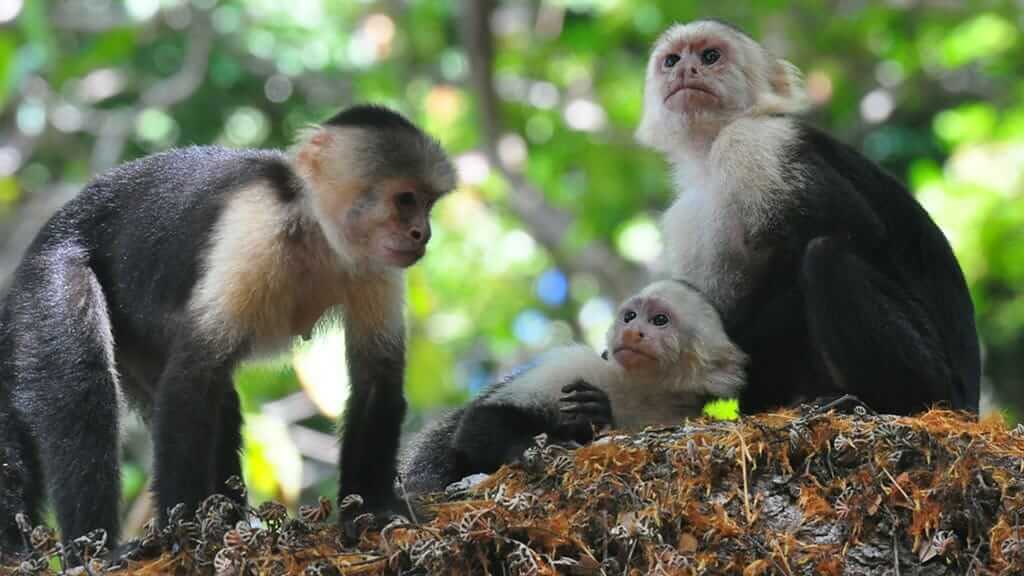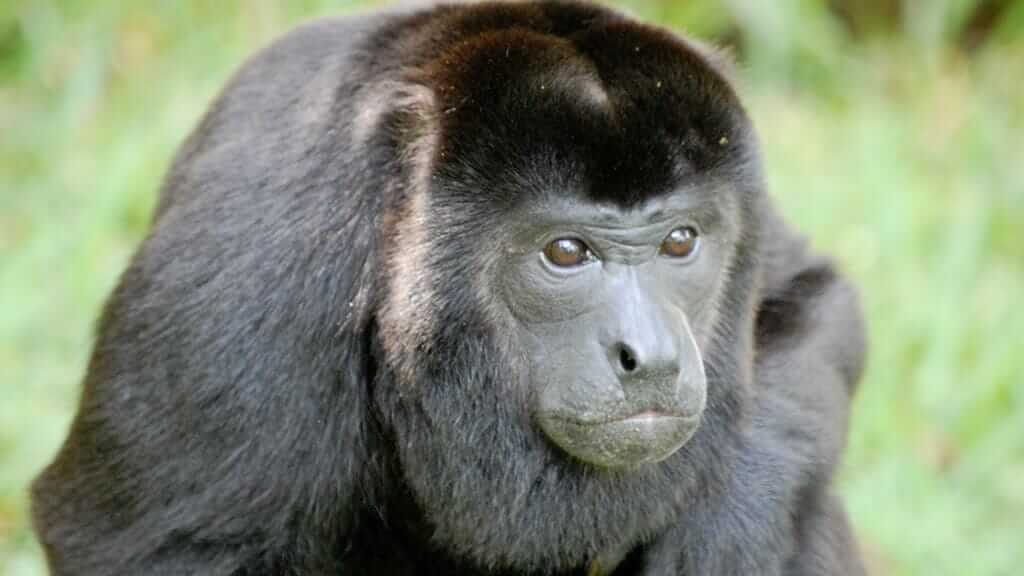Monkeys are similarly abundant on either side of Ecuador’s central Andes mountain range. Following on from last week’s blog on inhabitants of the Amazon jungle, we’ll now look at four species of the Pacific coastal regions. The following text is adapted from the Ministry of Tourism’s official observation guide, Primates of Ecuador.
Brown-headed Spider monkeys [Ateles fusciceps]
Also known as bracilargo (long arms) or chuba (Afro-Ecuadorian), these measures from 31-63cm (without tail). It lives in primary or old secondary forests, where it prefers tall, thick trees with wide treetops and overlapping branches. These features provide it with good visibility of the forest and rapid traveling. You might also find it on the ground eating clays in salt licks, which are natural mineral deposits that exist in nutrient-poor ecosystems. It can travel up to 3 kilometers (1.86 miles) per day; its body is well designed for this. It has a complex social organization that consists of groups that stick together or separate depending on food availability. Larger groups travel in times of abundant fruit.
White-headed Capuchin monkeys [Cebus capucinus]
Also known as cariblanco (whiteface) or lanco (Afro-Ecuadorian), these measures from 33-45cm (without tail). It usually lives near the canopy of primary, secondary and degraded forests, but often descends to ground level when searching for food such as insects. It is very active, spending most of the day examining leaves, tearing tree bark out and tossing leaf litter apart for searching food. These primates are very smart. They have been seen using sticks and other tools to obtain food or to defend themselves. It has also been reported using plants as medicine and insect repellent. Interestingly, it has behaviors that are reminiscent of humans, such as forgiveness after fights.

Photo taken from: DeviantArt
Mantled Howler monkeys [Alouatta palliata]
Also known as mono burro (donkey monkey) or mono chillón (screaming monkey), these measures from 48-67cm (without tail). It lives in primary or degraded forests, from canopy to a few meters above the ground. It may even be seen walking on the ground, crossing streets, pastures, and other open areas! It can survive in small forest patches, even yards two hectares in extension. Why? Because the howler monkey requires lots of rest and little movement in order to digest leaves, which are its main food and they take a long digestion time. It also visits salt licks (mineral deposits) and eats decaying wood to help absorb nutrients from leaves. Its howls can be heard over 2 kilometers (1.2 miles) away.
White-fronted Capuchin monkeys[Cebus albifrons]
Also known machín de cara blanca (white-faced capuchin) or mono blanco (white monkey), these measure from 35-46cm (without tail). It can live in primary, secondary or altered forests, which occupies all forest strata, including the ground level where it searches food in dry leaf litter, especially when the fruit is scarce. It can approach crops such as cornfields to find food. In the Amazon, it prefers borders between flooded and terra firme forests. Likewise, it inhabits palm swamps, which searches food and rests. Each troop has a dominant male who takes control of the group, and all troop members pay attention to its warning behaviors under risky situations. It is very agile and smart.
A visit to Ecuador’s Pacific coast is best enjoyed with a trip to Silver Island, the “poor man’s Galapagos” with some of the same species. Our Happy Gringo travel advisors are here to help 🙂





